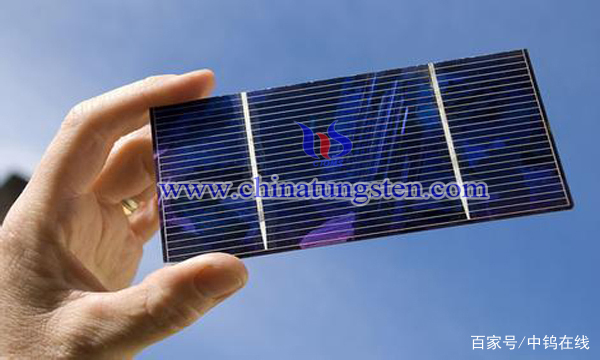New Nanomaterial that Makes Graphene Solar Cell Feasible
- Details
- Category: Tungsten's News
- Published on Wednesday, 18 July 2018 17:22
Graphene is a single layer of carbon atoms and has desirable properties for a variety of applications. In the past decade, graphene is the most popular material. In 2017 alone, more than 30,000 research papers on graphene were published worldwide. For example, the most anticipated graphene solar cells. The most advantage of graphene as a material for batteries is that the conduction is extremely fast. But it has some disadvantages that limit its application to graohene solar cells. Happily, scientists had create a new nanomaterial contains graphene that makes graphene solar cells feasible.
But what is certain is that scientists around the world have been working on the architectural improvements to graphene. Recently, two researchers from the University of Kansas in the United States connected the graphene layer and two other transition metal monolayer two-dimensional material, molybdenum diselide and tungsten disulfide, to extend the life cycle of electrons. The electronic performance has improved hundreds of times, and the significance of this work is to promote the development of high-performance ultra-thin solar cells and flexible solar cells.

For electronic and optoelectronic applications, solar cells convert energy from sunlight to electrical energy. Graphene has excellent charge transport properties. Electrons move in graphene at a rate of 1/30 of graphite speed, which is much faster than other materials. This suggests that graphene can be applied for solar cells. But graphene also has a major drawback that hinders this application - its ultra-short lifetime excitation electrons are only about one picosecond (one millionth of a second).
Professor Zhao Zhao, the principal of the research team, and his student Ryan said: "After the sun activates the electrons, the electrons can freely move in the material - just like electricity."
But at the same time, one of the biggest challenges in achieving high efficiency of solar cells with graphene as the working material is the release of electrons. The speed is extremely fast, and graphene is a typical "zero bandgap material", which has a strong tendency to lose energy and become immobile. Professor Zhao said: "In graphene, electrons remain free in only one picosecond. This is too short for accumulating a large amount of mobile electrons. In other words, electrons in graphene can be excited by light excitation. It then becomes mobile and can move quickly, but they can only keep moving for too short a time to contribute to electricity. Therefore it is difficult to maintain the heat in one second. This is an inherent characteristic of graphite, and has become the limiting factor for it to be used in aphotovoltaic or light-sensitive materials.
To achieve high efficiency of graphene solar cells, the researchers designed a three-layer material that stacked a single layer of molybdenum diselide (MoSe2), tungsten disulfide (WS2), and graphene.
We can think of the molybdenum disulfide layer and the graphene layer as two rooms full of electronics, while the middle WS2 layer is a corridor separating two rooms. When the light is irradiated, the electrons in the MoSe2 layer are released. They are allowed to pass through the WS2 layer corridor into the graphene layer. The corridor acts as a buffer to allow electrons to leave their seats in MoSe2, which helps convert light into electricity.
To prove that this idea is effective, researchers used ultrashort laser pulses (0.1 picoseconds) to release some of the electrons in MoSe2. And by using another ultrashort laser pulse, they were able to monitor these electrons as they moved to graphene. They found that these electrons moved on average in a "corridor" of about 0.5 picoseconds. They then move for about 400 picoseconds – 400 times longer in time over single-layer graphene. This contributes to efficient charge and discharge of the solar cell.
Graphene, tungsten disulfide and molybdenum diselenide are thin single-layer two-dimensional nanomaterials. So the combination of the three materials can be used to make extremely thin, extremely small, transparent solar panel, which converts light into electricity is both efficient and stable. At the same time, scientists believe that the multi-junction cell can be constructed by using the bandgap adjustability of the three materials, and then applied to electronic devices such as foldable mobile phones.
- Tungsten Manufacturer & Supplier, Chinatungsten Online: www.chinatungsten.com
- Tungsten News & Prices of China Tungsten Industry Association: www.ctia.com.cn
- Molybdenum News & Price: news.molybdenum.com.cn
- Tel.: 86 592 5129696; Fax: 86 592 5129797; Email: sales@chinatungsten.com



 sales@chinatungsten.com
sales@chinatungsten.com